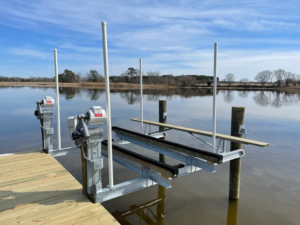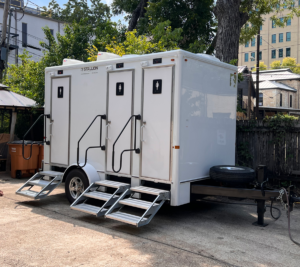Elevating your boat out of the water will help prevent algae, moss and corrosion that can decrease your boat’s value and performance. It also helps to extend your boat’s lifespan by preventing it from being constantly exposed to the elements.
If you live in a rough water area, you’ll want to look for a lift with more strength, stability and bracing to ensure it can withstand severe weather conditions.

Elevator Lifts
Elevator lifts use hydraulic or electric power to raise and lower a platform that can support wheelchairs and other mobility aids. They are often found in commercial buildings and can move people between floors without requiring them to enter or exit the building. They can be powered by either hydraulics or electricity and can travel a limited amount of vertical distance (up to 14 feet).
The power for an elevator comes from a large motor that drives gears that turn a sheave—a grooved wheel that guides the main cable that supports both the counterweight and the lift car. A separate governor cable connects to the elevator car, and if the lift moves too fast, the centrifugal arms inside fly outward and trip one or more safety mechanisms that shut off the motor or apply the brakes.
Ship elevators are the large, horizontal steel trays that move cargo between levels on ships. They are connected to an electric motor that operates from the ship’s control room and can operate at much faster speeds than a standard elevator. Stage elevators are the hydraulic machinery that raise and lower sections of a theater’s stage. Radio City Music Hall, for example, has four of these massive elevators that can lift an entire cast and orchestra.
4-Post Conventional Lifts
When shopping for a new lift, there are a lot of different options to choose from. The best one depends on a number of factors including the size of your boat and the area you live in. Some areas of the country can get very rough weather so you will need to purchase a lift that is made to withstand those conditions. Another factor to consider is what kind of use you will be getting out of your lift. For instance, you may need to work on your car under it so you will want a lift with the ability to crank up and down.
A conventional lift is also a good choice if you live in a place with a lot of wind because it stands tall and has the strength to keep your boat stable against the wind and waves. These types of lifts are welded and made from aluminum to help them stand up to harsh weather conditions. They can also be built with 6-8 posts rather than 4 to support heavier boats.
These lifts are also a good choice for those who want to put accessories and add-ons on their lift. For instance, you can get a canopy for your lift that will help protect it from the sun and rain. You can also buy curtains to wrap around your lift so your boat is completely protected.
Another type of lift to look for is a cantilever lift. These are a little more expensive than conventional lifts but they are a great choice for those who plan to spend a lot of time under their boat working on things like changing the oil, tyres and other maintenance work. These lifts are a little more difficult to install but they can be moved to a new location easily by professional installers.
One last type of lift to look for is an elevator lift. These are a bit different from other lifts because they are designed to use as little waterfront space as possible. This makes them perfect for people who live in channels or small canals where they can’t have a traditional pier. These lifts are also made from aluminum and have the ability to be moved by a crane if necessary. They are fitted with a mechanical locking system that is independent of the lifting system and has a hydraulic over pressure valve for maximum safety.
Rough Water Lifts
In locations where waves crash and waters are rougher, you may need to go with a heavier-duty lift. These are often reinforced with stronger arms, mechanisms and bolts. This can save you on maintenance costs over the years as it will be more durable and last longer than a standard lift.
You should consider the make and model of your boat when choosing a lift, as well as its dry weight (without any additional gear or batteries) and maximum capacity. This will help you determine if your lift is the right fit for you. You also want to choose a lift with the right size cradle to properly store your vessel. The beam should match the length of your boat, so you don’t have to worry about it overhanging the edge of your dock.
While some boat owners choose to keep their boats tied or anchored to their dock during storage, this can cause damage and even breakage in severe cases. Additionally, the constant swaying can lead to scrapes and scuffs on your boat and dock, which will require extra cleaning and repairs down the road. A boat lift will prevent this from happening by keeping your vessel safely stored away from the dock and water’s surface.
Another thing to consider is whether you’re going to be using a slip or a mooring. If you’re planning on using a slip, be sure to take the width of the slip into account, as this can affect your boat lift options. If you’re using a mooring, be aware of the depths in your area as this can also change your lift options.
You should also look at the material your flotation tanks are made from. Metal tanks will corrode, which can result in costly repairs down the road. Opt for a lift with polyethylene tanks, which will provide you with the most value as they will resist corrosion and rust.
Specialized Lifts
Boat lifts are the most advanced way to keep your powerboat, pontoon or personal watercraft safe and out of the water when not in use. This helps maintain your boat’s value and extends its lifespan, as well as makes boarding safer and quicker for your family, friends and guests.
Whether you have an older model or a brand new boat, a boat lift will be beneficial to your watercraft and help keep it looking great, maximizing its performance, and extending the life of the engine. In addition, you won’t have to worry about the harmful effects of sitting in the water all the time, which includes corrosion, deterioration of materials and structures, and algae and moss growth that can affect its functionality and hull integrity over time.
Different types of lifts are designed for specific boats and conditions, so it’s important to consider which type will work best with your vessel and the conditions in your area. For example, if your location is prone to high or low tides, you’ll need to find a lift that can accommodate these fluctuations in water levels. Some lifts are designed to rise or fall with the water level, while others are self-contained and do not rely on water pressure or other outside factors to function.
A free-standing lift is a self-contained system that does not attach to a dock or piling structure, so it’s a good choice for locations that do not have much space available. Some of these types of lifts also feature add-ons, like canopies and power curtains, which provide additional protection from weather elements.
Another type of specialized lift is a piling mount or dock mount boat lift, which attaches directly to a fixed dock or to pilings that are strong enough to withstand the weight of the lift and the boat. These lifts are often more durable than free-standing lifts and typically require electric power to function.

